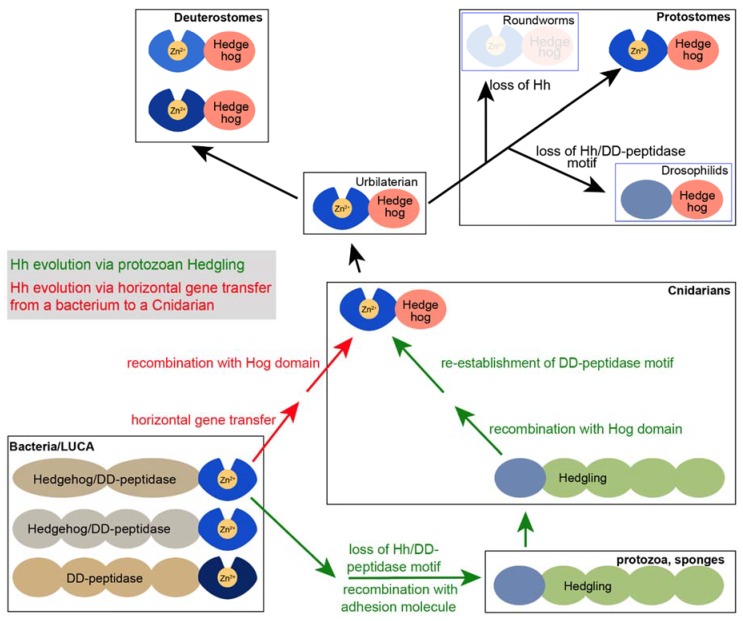Figure 5.
Models for the evolution of modern Hh proteins. The presence of both Hhs and Hedglings in Cnidarians support the model that the HhN of Hh domain arose via a recombination of the Hedgling N-domain. As Hedgling is present in at least some protozoa, it is plausible that it was derived from a DD-peptidase in the last universal common ancestor (LUCA). Alternatively, a Hh/DD-peptidase could have entered a Cnidarian ancestor from a bacterium via horizontal gene transfer, never losing the Zn2+ coordination in the process. Modern Hh was present in the Urbilaterian (the last common ancestor of protostomes and deuterostomes) and was retained in most of its offspring. The loss of the Hh/DD-peptidase motif in Drosophilids is derived, as is the loss of all Hh in some bilaterian protostomes (such as roundworms).

